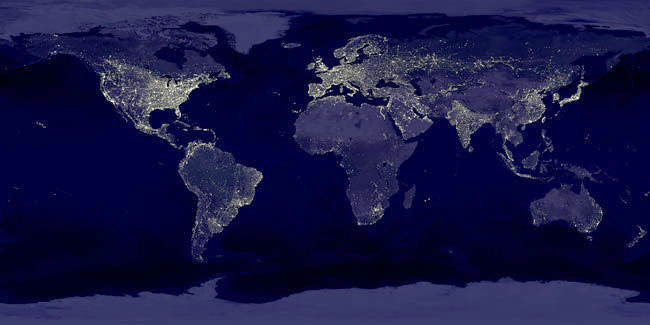This is an image mosaic, meaning that many images were "stitched" together to make it. It shows what the earth would like like if we could see it all at once, without cloud cover. Because neither condition is possible, hundreds of images are combined in this single mosaic.
On this image, light is a proxy for population, meaning that it tends to be found in the same places as humans. For this reason, we can see the places where humans live in large numbers and the places that human settlement is more difficult. Generally, the places that do not support agriculture do not support large numbers of humans. Places that are too cold, high, wet, or dry may have human settlement, but at low density. Exceptions are often found where some natural resource attracts a population of workers. Light is not a perfect proxy, though. Notice, for example, that South Korea appears almost as an island, because North Korea is barely visible. Some places with stronger economies look as though they have far more people than they actually do. Some specific features show up very well on this mosaic. For example, the distribution of population in Egypt exhibits a form not found anywhere else on the planet. Visit the APOD page for technical information and a higher-resolution version of the image. |


No comments:
Post a Comment